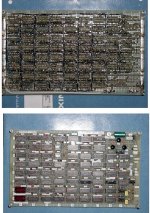KC9KEP
Member
I still wirewrap my projects, but wirewrap supplies are getting scarcer.
Can anyone recommend a source for sockets? Jameco has them, but they are quite expensive now!
eBay ain't much better.
And did anyone use "Wrap-ID's"? I loved those little plastic labels. They made wiring much easier.
The ones I could locate online request a king's ransom to purchase :-(
Solderless bread-boarding is fine for small and temporary projects ..
So, how is everyone fabricating now? Or has computer fabricating gone the way of gaslights
(And yes, I do have several Arduinos, so I know about them too! )
)
Can anyone recommend a source for sockets? Jameco has them, but they are quite expensive now!
eBay ain't much better.
And did anyone use "Wrap-ID's"? I loved those little plastic labels. They made wiring much easier.
The ones I could locate online request a king's ransom to purchase :-(
Solderless bread-boarding is fine for small and temporary projects ..
So, how is everyone fabricating now? Or has computer fabricating gone the way of gaslights
(And yes, I do have several Arduinos, so I know about them too!

